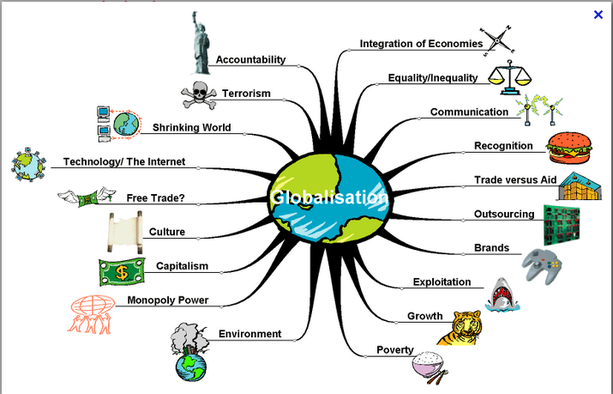Relevant for sociology paper-2
Globalisation is a word that is commonly used today, but its meaning is sometimes unclear, even among people who use it. Globalisation can be defined as the compression of the world in an attempt to strengthen the consciousness of the entire globe as one, based on a foundation of interdependency.
Cultural traditions and ideas are also passed amongst different groups from group to group, which we know as a process termed diffusion. It’s a descriptive term for when material moves from areas of high concentration to areas of low concentration. Ideas and practices spread from locations where they would be well-known to regions where they are new and rarely noticed.
Cultural traditions and ideas are also passed amongst different groups from group to group, which we know as a process termed diffusion. It’s a descriptive term for when material moves from areas of high concentration to areas of low concentration. Ideas and practices spread from locations where they would be well-known to regions where they are new and rarely noticed

Globalisation Theories(sociological theories)
World System Theory
World-systems theory emphasises the significance of the entire globe as a whole instead of individual nations. The world is divided into three regions: core nations, periphery countries, and semi-periphery countries. Countries in Western West Europe and the United States of America are examples of core countries. These countries have a powerful central government that is well-funded through taxes. They are economically diverse, industrialised, and largely self-sufficient. They have a sizable middle and working class, and they prioritise the manufacture of finished commodities above raw materials. Periphery countries generally refer to nations in Latin America and Africa that have unstable governments. They often rely on a single economic activity, which is more often than not, raw material extraction.
Example
The United States (core nation) reaps disproportionate gains from economic and political interactions with Brazil (semi-peripheral nation) and Kenya (peripheral nation). The United States has a large, successful economy that is backed by a stable government whereas Brazil has a wide economy but is not an important international player in global trade activities. Meanwhile, Kenya only has the raw materials to offer to both countries and since they have no other buyers, they have to make do with the minimal prices offered by the USA and Brazil.
Modernisation Theory
According to the Modernization theory, all states follow the same route of transition from a traditional to modern society. It implies that traditional countries, with some assistance, may evolve into contemporary countries in the same manner that the modern nations of today emerged in the first place. Modernisation theorists examine the country’s internal factors affecting its progress (eg: economic policies of the country) as it adapts to new technology, as well as the socio-political changes that arise. One myth that modernisation theorists hold onto is that every population is on the path of modernising and that it is always desirable. This ignores the consequences, such as the weakening of bonds within the wider family, rising urban unemployment, and the fragmentation of the country’s current economic structure, and as a result, many ‘underdeveloped’ nations may see modernity in an adverse manner.
Example
Although there is ample debate on the modernisation theory, there is one commonality between the arguments for and the critique against it. Both sides use Japan as an example. Some regard it as proof that a totally contemporary way of life is possible in a non-Western civilization. Others claim that as a result of modernisation, Japan has grown noticeably more Western.
Dependency Theory
Dependency theory was developed in response to modernization theory, and it employs the concept of Core and Periphery nations from the World-systems theory to examine disparities between countries. Essentially, it is the belief that the poorer periphery or third world nations export raw resources to the rich core or first world countries. This occurs not because they are at a lower stage of development, but because they have been absorbed into the global system as an underdeveloped country. They have their unique structures and traits that are not found in industrialised countries, and they will not become a “core” nation at a rapid pace no matter the amount of external aid received. They are, more often than not, in an undesirable economic situation, which implies they have little potential to progress or develop. The Dependency theorists maintain that underdeveloped nations, if this model continues, will remain poor and dependent on wealthier nations.
Example
The Philippines embodies the same fundamental reality as other Third World countries. This is the reality of dependent and uneven development, which enriches global corporations and their local partners while impoverishing the poorest people. The omnipresent MNCs, or multinational companies, are the best example of this form of growth.
Benefits and Drawbacks of globalisation
Benefits of globalisation:
- Increased efficiency in the use of resources
- Makes goods and services more accessible
- Promotes collaborations which boost the rate of modernisation
- Enhances Foreign Direct Investments (FDIs) which allows for increased development
- Assists in bringing populations above the poverty line
- Makes people aware of cultures and traditions from other part of the world
- Enables free flow of trade removing all restrictions and barriers
- Sharing of scientific and technological advances is made easier
Drawbacks of globalisation:
- Outsourcing labour reduces employment in the host country
- In countries with large human resources, machinery acquired through globalisation will cause large-scale unemployment
- Ill effects on the environment due to increased travel/traffic and overload of factories
- Processes of Globalisation might not have the same effect on all countries, resulting in economic inequalities
- Labour and Human rights are not kept in focus
- Cultural issues can arise when one culture dominates the other
- Allows Multinational Corporations (MNCs) too much power and liberty
The growing economic disparity between high-income and low-income nations is a cause for concern. And the amount of people living in abject poverty throughout the world is very concerning. However, it is incorrect to conclude that globalisation is to blame for the gap or that nothing can be done to alleviate the situation. On the contrary, low-income nations have taken longer to integrate into the global economy than others, partly due to their policies and partly due to causes beyond their control.

